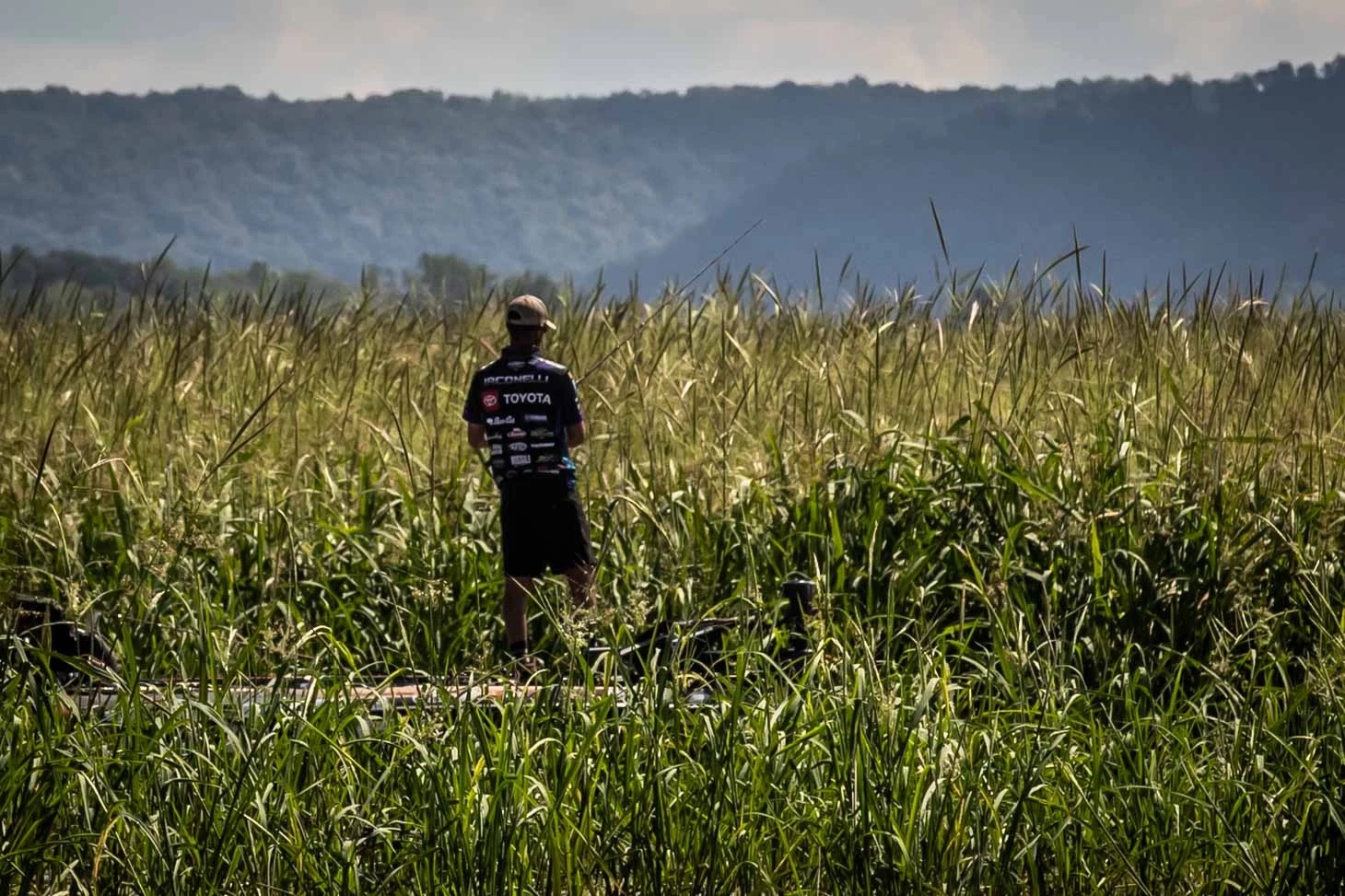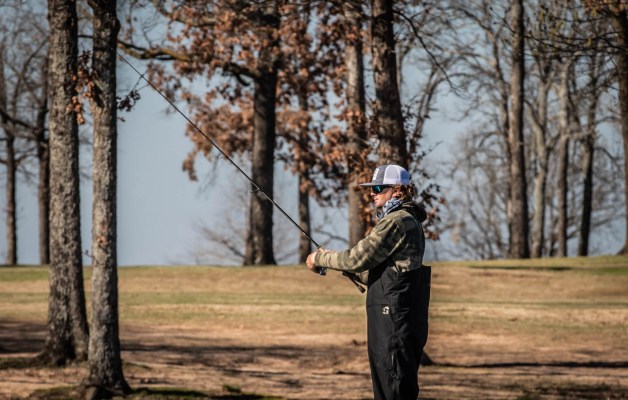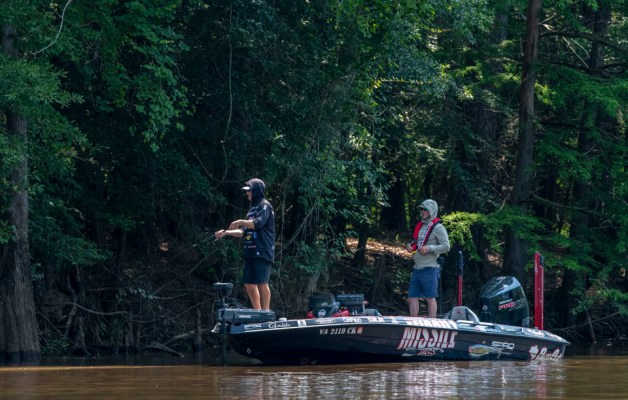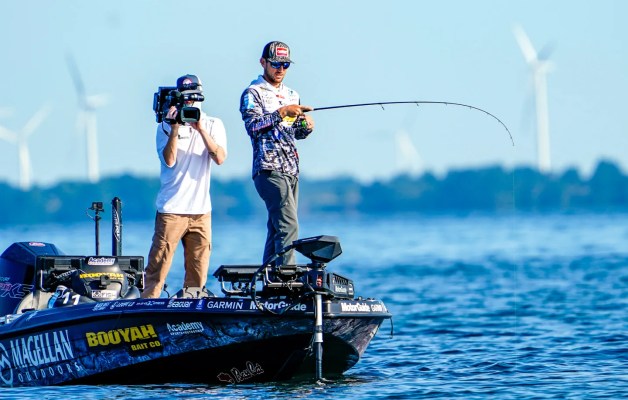
There’s a misconception that a suspending jerkbait is only for cold water. I even fell into that trap. A suspending jerkbait catches bass the year around. However, if I had to pinpoint when it really shines, that would be during the cold-water periods of fall into winter and winter into spring.
Another misconception is that a suspending jerkbait should sit motionless and horizontally during a pause. There are times when that posture works, but I’ve learned over the years that tweaking a suspending jerkbait will get you 50% more strikes.
I tweak my jerkbaits to alter their stance when paused and to make them rise very slowly nose up or sink very slowly nose down. I believe in these modifications so much I hardly ever fish a neutrally buoyant, horizontal jerkbait anymore. I make these mods to Rapala jerkbaits, but you can do the same thing with any suspending jerkbait.
Nose down
Anytime a cold front makes the water temperature drop in late fall and early spring, I want my jerkbait to cock nose down when paused and to sink very, very slowly, like an inch every two seconds. Shad start dying when an extreme cold front hits and they actually fade nose down. I’ve watched bass in clear water swim up to a horizontally suspending jerkbait, look at it and swim away. They suck up a nose-down, slowly sinking jerkbait because it looks more realistic in those conditions.
The nose-down modification carried me to fifth place at the 2013 Bassmaster Classic on Grand Lake. We were hit with frigid cold front conditions, and I began practice with a regular suspending jerkbait. I tweaked the bait to make it sink nose down, and it doubled the number of bites I was getting. It made a huge difference.
For this modification I use a Rapala Shadow Rap. It has three treble hooks and tends to hang nose down anyway. I simply remove the hook closest to the nose of the bait and replace with a treble that is one size bigger.
If that doesn’t add enough weight with whatever jerkbait you’re tweaking, put a Suspend Strip or a small piece of lead golf tape between the front hook and the bait’s bill. Another way to add weight to the nose is by replacing the O-ring you tie your line to with a heavy-duty O-ring or snap.
The line is critical. It has to be light fluorocarbon or the bait won’t perform right when you pause it. I use 6- or 8-pound Berkley 100% Fluorocarbon. Monofilament, braid and even a heavy fluorocarbon line will hold the nose up.
Nose up
I tweak a jerkbait to hang nose up and rise slowly on those warm, welcoming days in late fall and early spring that cause the water temperature to rise. Under those conditions, a nose-up posture and upward movement is the trigger. You’ll catch bass that won’t go for a horizontally suspending jerkbait. You want the bait to rise an inch every two or three seconds.
I do this modification with a Rapala Shadow Rap Shad. It’s a little shorter than the Rapala Shadow Rap and has only two treble hooks. It already sits a little nose up out of the pack. I replace the front hook with a size smaller treble. If I need a little extra buoyancy, I’ll replace the front hook with a size smaller feathered treble, like one on the back of a Pop R. A lot of times that feather is a focal point for a bass. Having a focal point on the belly is better than the tail because the bass gets more of the bait in its mouth.
To help the bait hang nose up and rise, I go with straight 6- to 12-pound monofilament. Monofilament floats. I use Berkley Trilene Sensation.
You can learn more about how I fish suspending jerkbaits and other techniques at www.mikeiaconelli.com or www.youtube.com/c/goingike.





